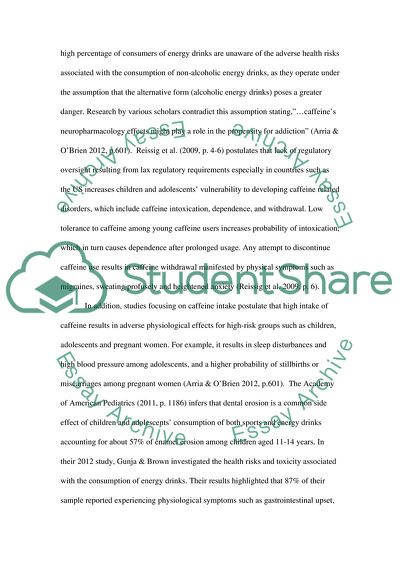Cite this document
(“Health Risks and Benefits Associated with Energy Drinks Essay”, n.d.)
Health Risks and Benefits Associated with Energy Drinks Essay. Retrieved from https://studentshare.org/health-sciences-medicine/1693783-1over-the-last-20-years-the-soft-drinks-market-has-seen-a-rapidly-expanding-promotion-and-production-of-caffeinated-energy-drinks-discuss-the-possible-benefits-and-health
Health Risks and Benefits Associated with Energy Drinks Essay. Retrieved from https://studentshare.org/health-sciences-medicine/1693783-1over-the-last-20-years-the-soft-drinks-market-has-seen-a-rapidly-expanding-promotion-and-production-of-caffeinated-energy-drinks-discuss-the-possible-benefits-and-health
(Health Risks and Benefits Associated With Energy Drinks Essay)
Health Risks and Benefits Associated With Energy Drinks Essay. https://studentshare.org/health-sciences-medicine/1693783-1over-the-last-20-years-the-soft-drinks-market-has-seen-a-rapidly-expanding-promotion-and-production-of-caffeinated-energy-drinks-discuss-the-possible-benefits-and-health.
Health Risks and Benefits Associated With Energy Drinks Essay. https://studentshare.org/health-sciences-medicine/1693783-1over-the-last-20-years-the-soft-drinks-market-has-seen-a-rapidly-expanding-promotion-and-production-of-caffeinated-energy-drinks-discuss-the-possible-benefits-and-health.
“Health Risks and Benefits Associated With Energy Drinks Essay”, n.d. https://studentshare.org/health-sciences-medicine/1693783-1over-the-last-20-years-the-soft-drinks-market-has-seen-a-rapidly-expanding-promotion-and-production-of-caffeinated-energy-drinks-discuss-the-possible-benefits-and-health.


